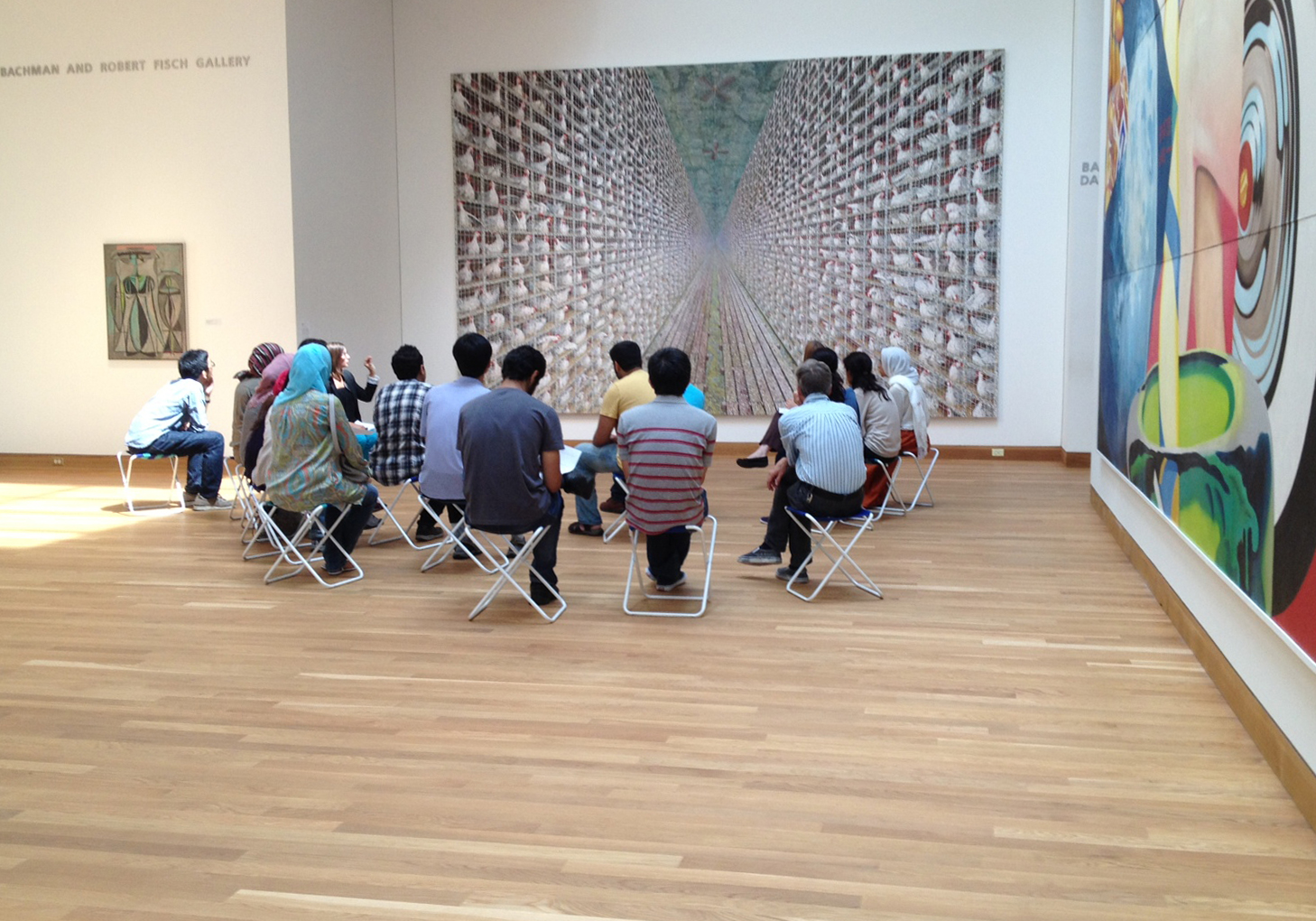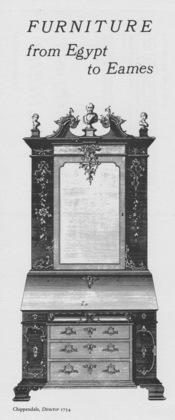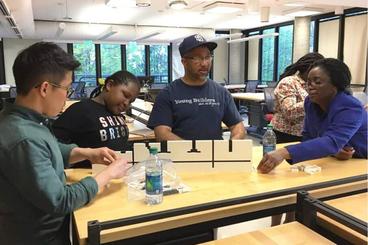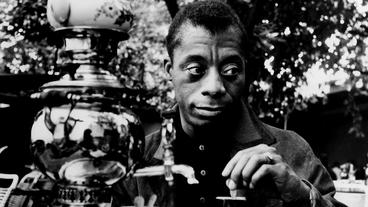Often considered polar opposites, medical science and art share more common threads than you might think. In engaging with concepts of creation, experimentation, manipulation, and representations of life and humanity, both fields demand curiosity and a creative spirit from their practitioners. For four weeks, two worlds harmoniously collided as fourth-year UMN medical students partnered with the Wesiman Art Museum's (WAM) education department to question and consider how art may aid the diagnosis and care of patients.
The course, called "Advanced Physical Diagnosis and Medical Decision Making," is led by Dr. Andrew Olson, Assistant Professor of Medicine and Pediatrics in the Medical School. Through art education strategies and activities implemented by WAM Director of Education Jamee Yung, the course confronts students with uncertainty, often discomforting at times, and teaches the value of careful observation, curiosity, and wonder.
“I think that what we’re doing now isn’t good enough. Diagnoses errors are all too common,” Dr. Olson said. “15 percent of in-patient diagnoses are wrong and 5 percent of out-patient are wrong. We have a problem that we have to fix. Medical education looks a lot like it did 50 years ago, and we need to innovate and realize the value of things such as art and humanities and different ways of thinking … we have to innovate or else we’ll get stagnant.”
At WAM, the class underwent numerous exercises designed toward themes of uncertainty, reflection, and connection. Blind contours, quick sketches, layered drawings, and free writing were just a few of the activities, all of which were succeeded by intensive reflection and discussion.
In one instance, students analyzed Beth Lipman’s sculptural installation, One Portrait of One Man, created in response to Marsden Hartley’s painting, One Portrait of One Woman, displayed directly above and surrounded by Lipman’s piece. With little context, the two works appear as one to the unknowing eye.
“In that case, the students took quite a while, but they finally got to the point. One of the students asked, ‘is it possible that two things are going on?’ That’s a key thing to ask us in diagnosis as well,” Dr. Olson said.
Augie Lindmark is a fourth year medical student who will be starting internal medicine residency in primary care and HIV medicine this summer. While medical education focuses on details and prioritizes correct answers, Lindmark noted there’s a darker side, where subjectivity and uncertainty are almost taboo.
“I think this is slowly changing, especially because of classes like this one. When critically observing a piece of art, there’s much less certainty than what medical students and physicians are used to. I think this can be challenging at first, but it also provides an incredible opportunity to hone skills in subjectivity,” Lindmark said. “When a patient presents a problem, the diagnosis isn’t always obvious … the job of a physician is to make sense of uncertainty,”
Donna Coetzee is also a fourth year student, starting internal medicine residency in June. She enrolled in the elective course expecting more hands-on and skills-based work, but was instead met with a reflective and thought-based curriculum.
“The experience at the Weisman was super unique for me, I'd never done anything like that before,” she said. “The exercises we did while we were there was a time when it was okay to just try something I never expected to be good at or ‘get right,’ which made it easier to be more creative with thinking.”
Both Lindmark and Coetzee highly recommend the course to future medical students. A unique collaboration and an eye-opening experience for students, the course is a wonderful example of the ideal utilization of university resources to innovate and enhance education.
When asked what he hopes students ultimately take away from the course, Dr. Olson paraphrased a comment that a student shared with the class.
“It is tempting to consider that things like art and literature and music are frivolous instead of fundamental. At its core, medicine is a science that is melded challengingly and beautifully with art. If we think that the humanities and art and wonder are frivolous, that’s sad. Instead we need to engage with those things,” Dr. Olson said. “I think my patients want a doctor who doesn’t consider those things to be frivolous.”



